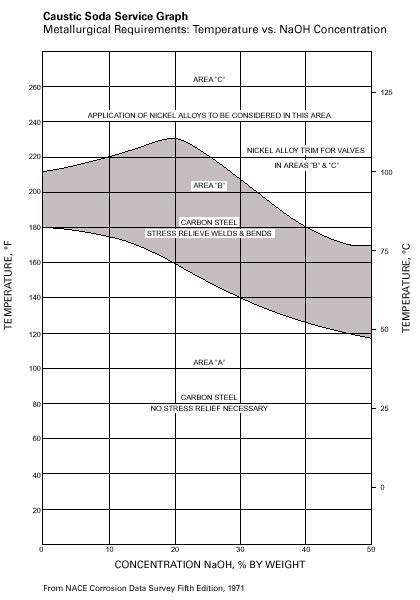Hi there,
Am in the process of developing a design for new bulk caustic (50% NaOH) and sulphuric acid (98%) storage and handling systems.Both will be stored and distributed at ambient temperatures
I am looking for a reference document that is useful to guide in the designs of these systems, or perhaps just input from you guys on the most critical things to consider. I know things to consider are 1) local legislation for handling of hazardous substances and 2) ASME B31.3, however i find the latter an un-easy read.
Things I am looking for help on:
-Material selection (looking at SS 316L Schedule 10 for both. Recommend PVC by a supplier for sulphuric but am skeptical over long runs and UV exposure. Do not plan to use carbon steel)
- Guidelines for design velocities (best practice for corrosion protection etc)
- Guidelines around general pipe run design e.g. fall to storage tank or fall to end users, secondary containment requirements (if any) that may apply to pipework
- Qualifications welders should have e.g. WPS, do they need to be certified to ASME IX welding?
Appreciate the help and let me know if i need to elaborate on anything
Am in the process of developing a design for new bulk caustic (50% NaOH) and sulphuric acid (98%) storage and handling systems.Both will be stored and distributed at ambient temperatures
I am looking for a reference document that is useful to guide in the designs of these systems, or perhaps just input from you guys on the most critical things to consider. I know things to consider are 1) local legislation for handling of hazardous substances and 2) ASME B31.3, however i find the latter an un-easy read.
Things I am looking for help on:
-Material selection (looking at SS 316L Schedule 10 for both. Recommend PVC by a supplier for sulphuric but am skeptical over long runs and UV exposure. Do not plan to use carbon steel)
- Guidelines for design velocities (best practice for corrosion protection etc)
- Guidelines around general pipe run design e.g. fall to storage tank or fall to end users, secondary containment requirements (if any) that may apply to pipework
- Qualifications welders should have e.g. WPS, do they need to be certified to ASME IX welding?
Appreciate the help and let me know if i need to elaborate on anything

